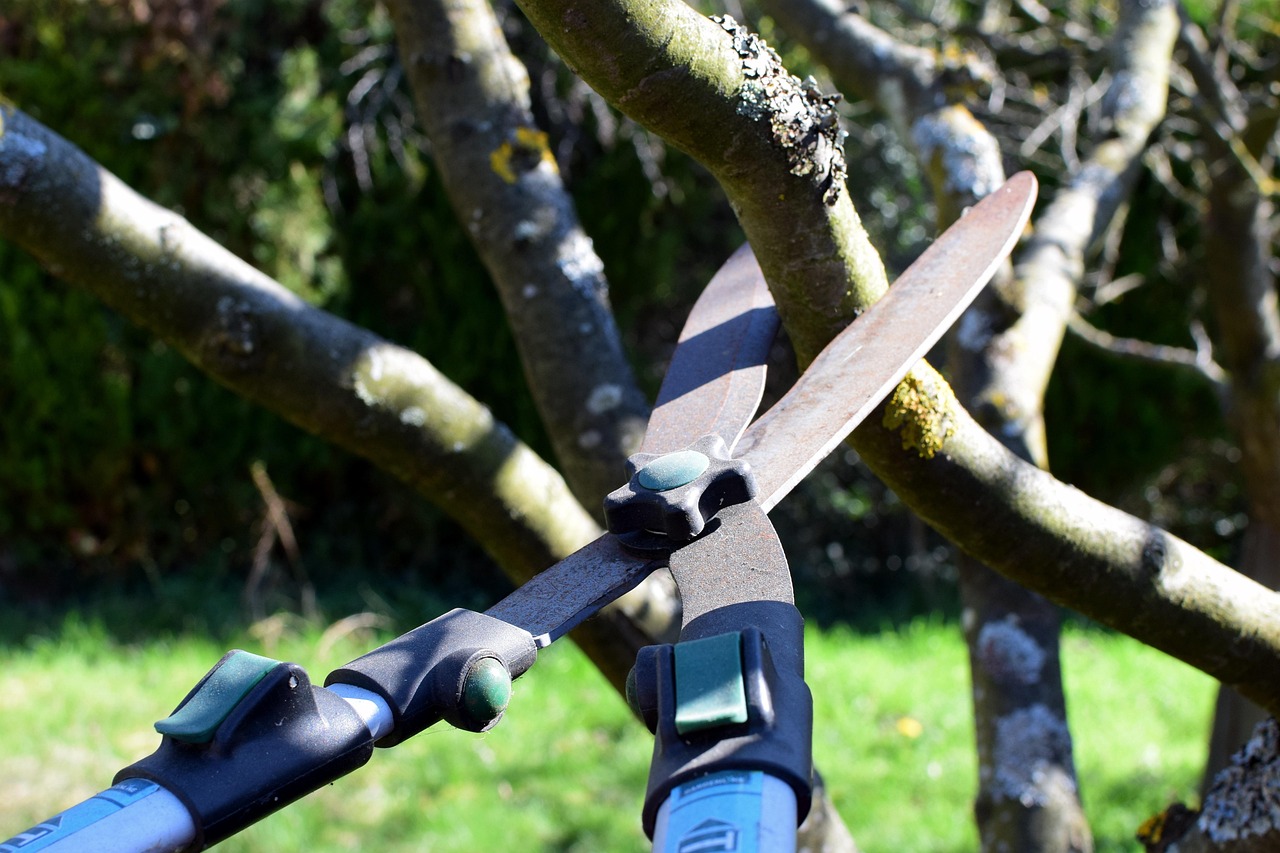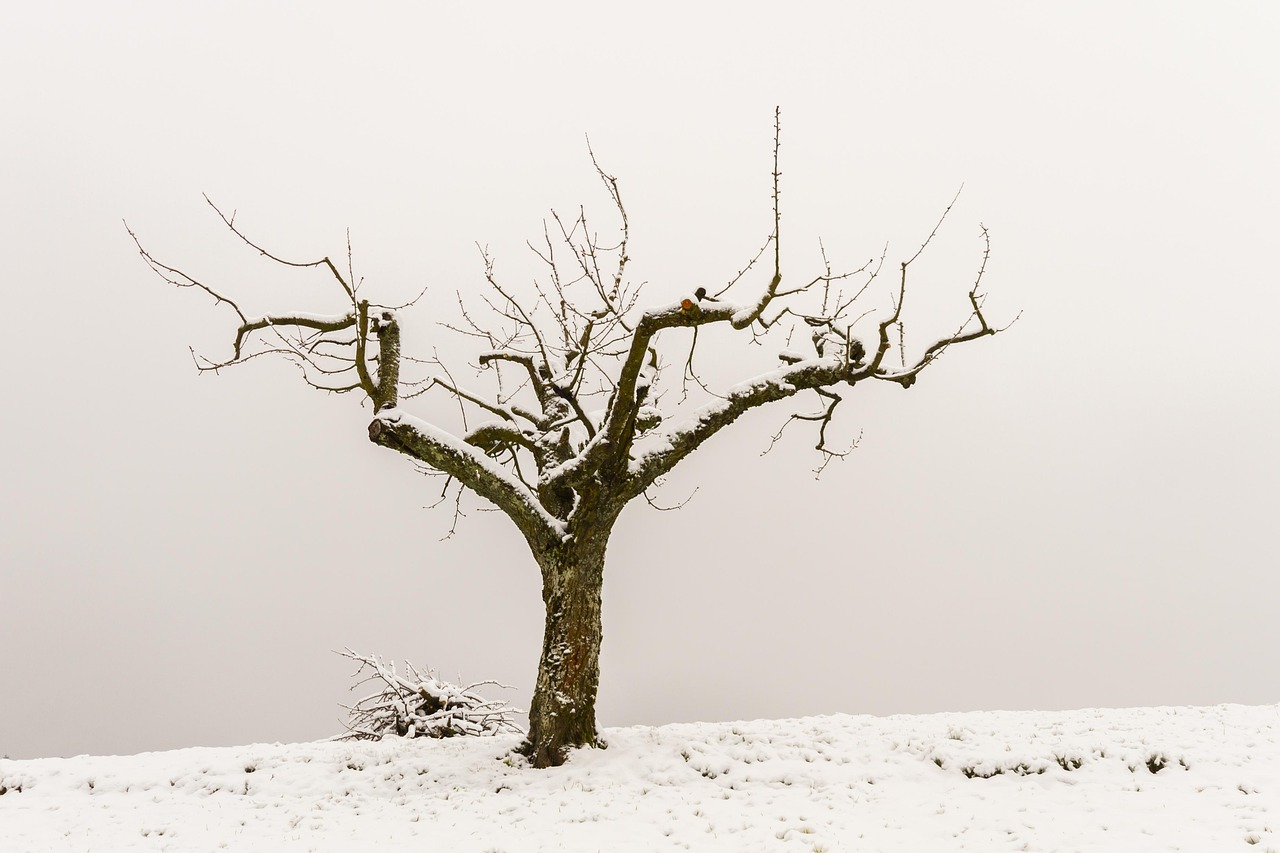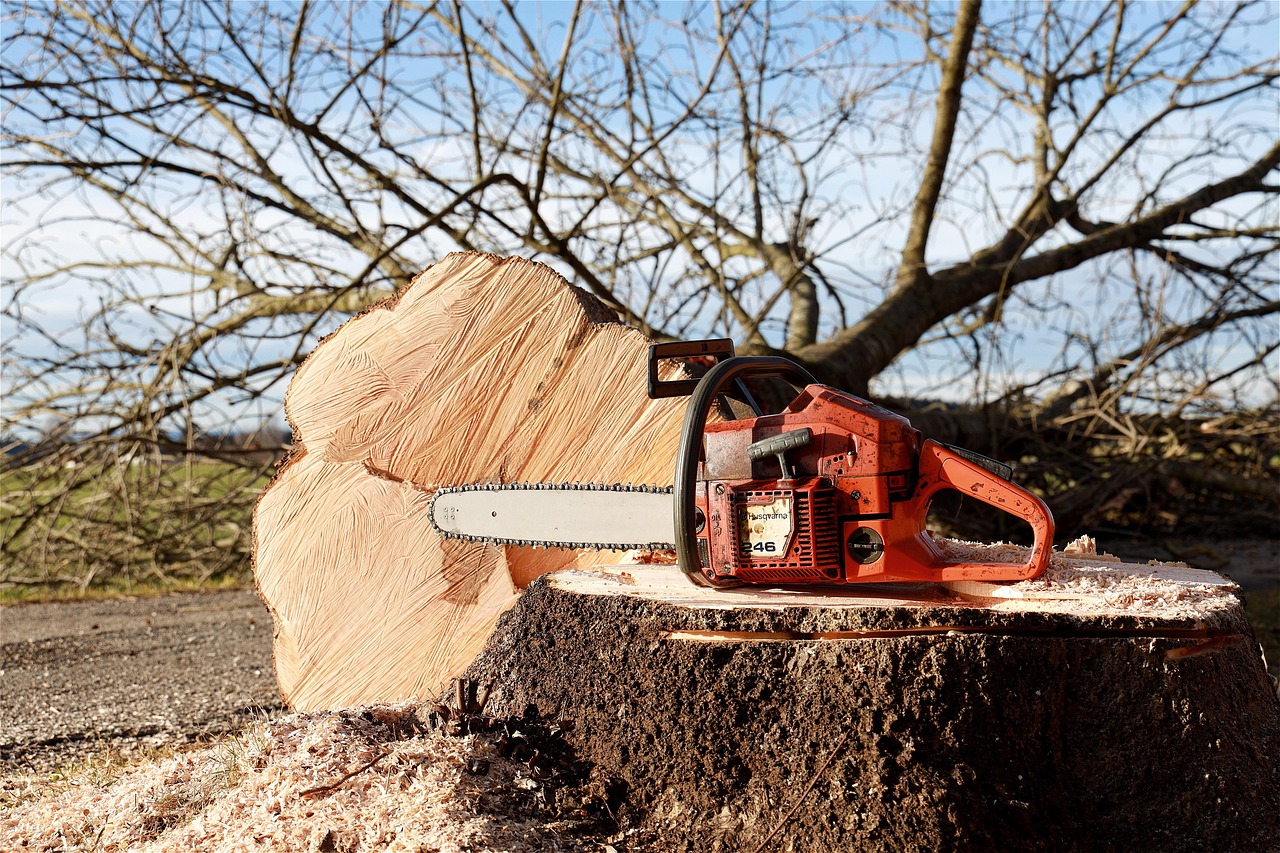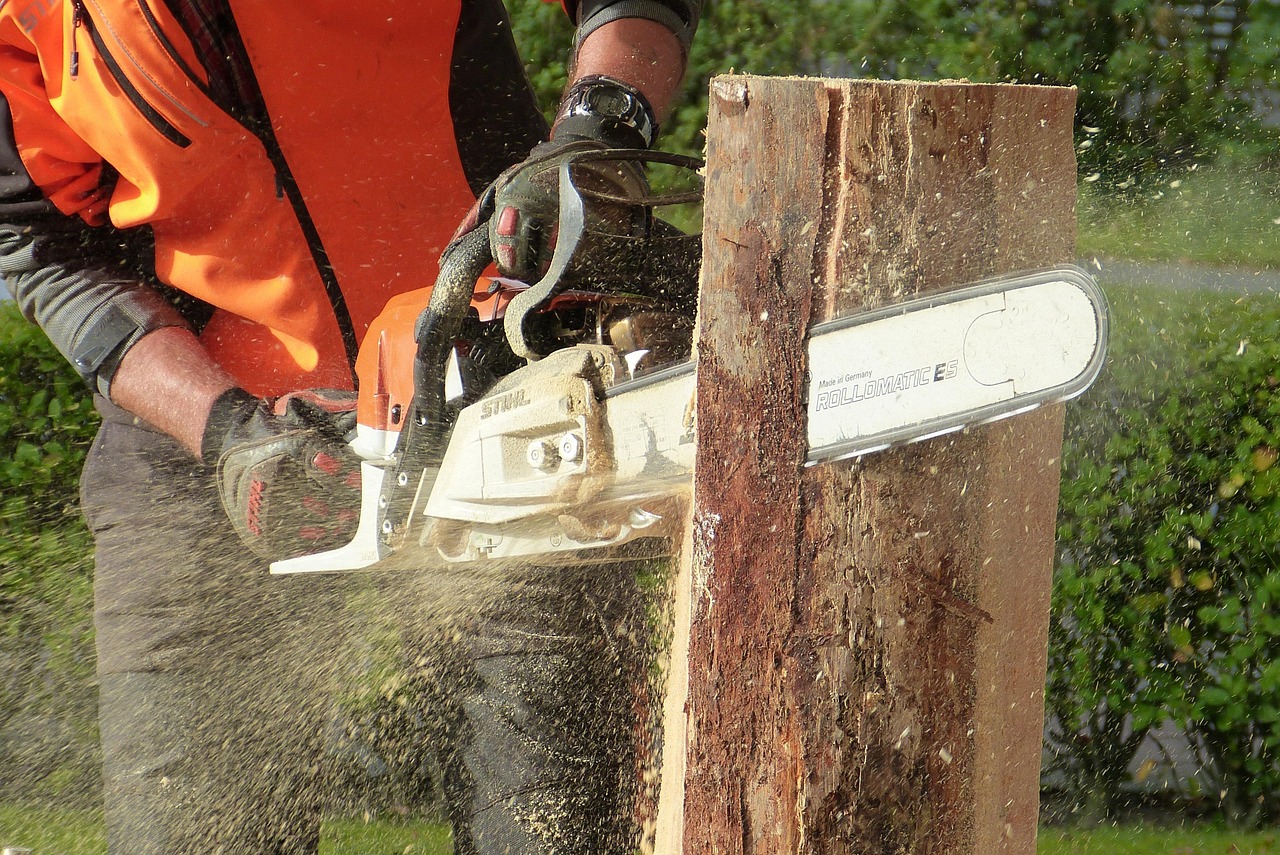Pruning young trees encourages faster maturity by promoting healthy growth, shaping their structure, and removing competing branches. This process enhances light penetration and air circulation, leading to robust development and a stronger, more resilient tree.
Young tree pruning is an essential technique for gardeners and arborists alike. When performed correctly, it can significantly influence the growth trajectory of a tree. Pruning during the early stages of a tree’s life helps establish a strong framework. It also encourages the tree to develop a desirable shape and boosts overall health. The right approach to pruning can lead to faster maturity, allowing the tree to reach its potential sooner.

Understanding the fundamentals of young tree pruning is crucial. Many people think pruning is simply about cutting branches. However, it also involves selecting which branches to keep and which to remove, focusing on the long-term health of the tree. The timing and method of pruning can vary based on the species of the tree and its specific needs.
Why Prune Young Trees?
Pruning serves several important purposes for young trees:
- Encourages Strong Structure: Proper pruning helps develop a strong central leader, which is vital for the tree’s stability.
- Enhances Airflow: Removing excess branches improves air circulation, reducing the risk of fungal diseases.
- Increases Sunlight Exposure: Thinning out branches allows more sunlight to reach the leaves, promoting photosynthesis.
- Prevents Crowding: Pruning helps avoid overcrowding, ensuring that each branch has adequate space to grow.
The benefits of pruning extend beyond aesthetics. Healthy trees are less susceptible to disease and pests. By following proper pruning techniques, you can ensure that your young trees grow into strong, mature specimens that thrive in their environment.

When to Prune Young Trees
The timing of pruning is critical for achieving the best results. Generally, the best time to prune young trees is during their dormant season. This is typically in late winter or early spring before new growth begins. Pruning during dormancy minimizes stress on the tree and reduces the likelihood of sap loss.
Some key considerations regarding timing include:
- Species-Specific Timing: Different species may have unique requirements for pruning times. Always research the specific type of tree you are working with.
- Avoiding Flowering Season: For flowering trees, prune right after blooming to prevent cutting off next year’s flowers.
- Weather Conditions: Choose a dry day for pruning to minimize the risk of introducing disease through cuts.
Essential Pruning Techniques
There are several techniques to consider when pruning young trees. Understanding these methods can lead to better outcomes:

- Heading Cuts: This technique involves cutting back a stem or branch to a bud. It encourages bushier growth and helps shape the tree.
- Thinning Cuts: Thinning cuts remove entire branches back to their point of origin. This method opens up the canopy and allows better light penetration.
- Pinching: Pinching involves removing the tips of new shoots. This encourages branching and denser foliage.
Each of these techniques serves a specific purpose and can be combined for optimal results. The goal is to create a well-balanced tree with good structure and health.
Tools Required for Pruning
Having the right tools is essential for effective pruning. Here are some common tools used in young tree pruning:
| Tool | Description | Use |
|---|---|---|
| Hand Pruners | Small, manual tools ideal for cutting small branches. | For precise cuts on thin branches. |
| Loppers | Larger pruning shears that provide leverage for cutting thicker branches. | For medium-sized branches. |
| Saw | A hand or powered saw for cutting larger branches. | For heavy-duty pruning tasks. |
| Pole Pruner | A long pole with a cutting blade on one end. | For reaching high branches without a ladder. |
Using the appropriate tools ensures clean cuts, which helps the tree heal more effectively. Always make sure your tools are sharp and disinfected before use to prevent disease transmission.

The Importance of Aftercare
After pruning, proper care is vital for the tree’s recovery and growth. Here are some aftercare tips:
- Watering: Ensure the tree receives adequate water, especially during dry spells.
- Mulching: Apply mulch around the base to retain moisture and suppress weeds.
- Monitoring: Keep an eye on the tree for signs of stress or disease after pruning.
Caring for your young trees after pruning enhances their chances of thriving and reaching maturity swiftly. By investing time in proper pruning and aftercare, you set the stage for healthy, mature trees that will beautify your landscape for years to come.
Common Mistakes in Young Tree Pruning
Even experienced gardeners can make mistakes when pruning young trees. Understanding these pitfalls can help you avoid them and ensure a healthy tree growth process. Here are some common mistakes to watch out for:
- Over-Pruning: Removing too many branches can stress the tree and hinder its development. Aim to remove no more than 25% of the tree’s foliage in a single season.
- Improper Cuts: Making cuts too close to the trunk or leaving stubs can cause damage. It’s essential to cut just above a bud or branch collar.
- Ignoring Tree Species Needs: Different species have specific pruning requirements. Failing to consider these can lead to poor growth.
- Pruning at the Wrong Time: Pruning during the growing season can shock the tree. Stick to the dormant season for most species.
- Neglecting Tools: Using dull or dirty tools can lead to jagged cuts and potential infections. Always maintain and disinfect your tools.
By being aware of these common mistakes, you can take proactive steps to ensure your pruning efforts promote tree health rather than hinder it.
Understanding Tree Growth Patterns
To prune effectively, it’s crucial to understand how trees grow. Trees have distinct growth patterns that influence their structure and development. Here are some key concepts:
Apical Dominance
This is the phenomenon where the main central stem of the tree grows more vigorously than other branches. Apical dominance helps trees maintain a single leader, which is essential for stability. However, if not managed properly, it can lead to a narrow canopy.
Lateral Growth
Lateral branches grow outwards from the main stem. When pruning, balancing lateral growth with vertical growth ensures a well-rounded tree. Selective pruning of lateral branches can enhance sunlight penetration and airflow.
Growth Zones
Trees consist of several growth zones, including:
- Root Zone: The area below ground that supports the tree.
- Trunk Zone: The main stem that provides structural integrity.
- Crown Zone: The upper part of the tree where leaves and branches grow.
Understanding these zones helps you focus your pruning efforts where they will be most effective.
Seasonal Considerations for Pruning
The seasons affect how trees respond to pruning. Here’s a breakdown of how each season impacts pruning decisions:
Spring
This is typically the time when trees start to grow actively. Avoid heavy pruning during this season as it can shock the tree. However, light pruning to remove dead or damaged branches is acceptable.
Summer
Summer is an ideal time for evaluating tree growth. You can perform maintenance pruning to shape the tree or remove any unwanted growth without causing significant stress.
Fall
Fall pruning is generally not recommended. Trees are preparing for dormancy, and cuts may not heal properly before winter sets in. Focus on cleanup and preparation instead.
Winter
Winter is the best time for major pruning tasks. Trees are dormant, and this minimizes stress and promotes healing. It’s also easier to see the structure of the tree without leaves, making it simpler to identify which branches need removal.
Signs That Your Tree Needs Pruning
Recognizing when a young tree needs pruning is vital for maintaining its health. Here are some signs that indicate it might be time to prune:
- Crowded Branches: If branches are overlapping or rubbing against one another, they should be thinned out to prevent damage.
- Disease or Damage: Look for signs of disease, such as discolored leaves or dead branches. Remove affected areas promptly.
- Weak Structure: If the tree has multiple leaders or weak branch angles, corrective pruning may be necessary to improve stability.
- Poor Growth: Stunted or unhealthy growth can indicate that the tree is competing for resources, which may require pruning to correct.
Understanding these signs allows you to take timely action, promoting healthier growth in your young trees.
Specific Pruning Techniques for Different Tree Species
Different types of trees have unique needs when it comes to pruning. Here are some general guidelines for various species:
Deciduous Trees
These trees lose their leaves in winter. Prune them during late winter or early spring before new growth begins. Focus on removing dead or crowded branches to enhance air circulation.
Evergreen Trees
Evergreens retain their foliage year-round. Prune these during late spring after new growth has emerged. Trim back only a small amount of foliage to avoid damaging the tree.
Fruit Trees
Fruit trees benefit from specific pruning techniques to encourage fruit production. Prune during dormancy to shape the tree and remove any weak growth that may hinder fruit development.
By tailoring your pruning approach based on tree species, you can optimize growth and health. Each species has its own characteristics and needs, making targeted care essential for success.
Advanced Pruning Techniques for Young Trees
Once you understand the basics of pruning, you can explore more advanced techniques that promote faster maturity and better health for young trees. These methods can help refine your pruning skills and enhance the effectiveness of your efforts.
Training Young Trees
Training is a proactive approach to shaping young trees as they grow. It involves guiding the tree’s natural growth patterns through selective pruning. Here are some popular training methods:
- Central Leader Training: This method encourages one main stem to grow taller than the side branches. It is ideal for most deciduous trees. Select a strong central leader and prune competing branches to maintain this focus.
- Open Center Training: This technique promotes a vase-like shape, allowing sunlight to penetrate the center. It works well for fruit trees. Remove the central leader and select several well-spaced branches to form the framework.
- Espalier: Espalier is a decorative method of training trees to grow flat against a wall or trellis. Regular pruning and tying branches to supports create a unique design while maximizing sunlight exposure.
Training young trees not only enhances aesthetics but also improves fruit production and overall tree health.
Thinning and Heading Back
Two fundamental techniques in pruning young trees are thinning and heading back. Understanding when and how to apply these techniques can lead to better results.
- Thinning: This involves removing entire branches back to their point of origin. Thinning opens up the tree canopy, allowing light and air to reach all parts of the tree. It is particularly effective in crowded areas where competition for resources is high.
- Heading Back: Heading back refers to cutting back a branch to a bud or lateral branch. This method encourages bushier growth and helps control the height of the tree without losing its structure.
Both techniques can be used in combination to achieve desired results. For example, you might thin out some branches while heading back others to maintain a balanced shape.
Pruning for Disease Prevention
Pruning can play an essential role in preventing disease in young trees. By removing affected areas, you can reduce the risk of spreading infections. Here are some strategies:
Identifying Signs of Disease
Being able to recognize symptoms of disease early on is crucial. Some common signs include:
- Discolored Leaves: Yellowing or browning leaves may indicate nutrient deficiencies or disease.
- Dead Branches: Branches that do not leaf out in spring may be dead or dying due to disease.
- Cankers: These are sunken areas on the bark that can indicate fungal infections.
If you notice any of these signs, it may be necessary to prune out affected branches immediately to prevent further spread.
Using Proper Techniques for Disease Management
To effectively manage diseases through pruning, consider the following tips:
- Sanitize Tools: Always disinfect your pruning tools before and after use, especially when working with diseased trees. Use a solution of one part bleach to nine parts water or isopropyl alcohol.
- Avoid Pruning During Wet Conditions: Pruning when it’s wet increases the risk of disease transmission through open cuts.
- Make Clean Cuts: Use sharp tools to ensure clean cuts, which heal faster and reduce the risk of infection.
Implementing these practices minimizes the potential for disease outbreaks and supports healthy growth in your young trees.
The Role of Nutrients in Tree Health
Nutrients play a vital role in the overall health of young trees. Adequate nutrition supports strong growth, making effective pruning even more critical. Here are some essential nutrients and their functions:
| Nutrient | Function | Deficiency Symptoms |
|---|---|---|
| Nitrogen | Promotes leaf growth and overall vigor. | Pale leaves, stunted growth. |
| Phosphorus | Aids root development and flower production. | Purple tinged leaves, poor root growth. |
| Potassium | Enhances drought resistance and overall health. | Browning leaf edges, weak branches. |
| Calcium | Strengthens cell walls and aids in nutrient uptake. | Blossom end rot in fruiting trees, poor growth. |
A balanced nutrient supply is essential for young trees. Regularly testing soil can help you determine what nutrients may be lacking and adjust your fertilization practices accordingly.
The Importance of Monitoring Growth After Pruning
After pruning, it is important to monitor the growth of your young trees closely. Observing their response allows you to assess the effectiveness of your techniques and make any necessary adjustments. Here are some aspects to consider:
- New Growth Patterns: Pay attention to how new growth develops after pruning. Healthy trees should exhibit vigorous new shoots.
- Pest Activity: Keep an eye out for signs of pest infestations that may occur as a result of stress from pruning.
- Disease Symptoms: Monitor for any signs of disease or stress that may develop after pruning, adjusting care as needed.
This ongoing assessment will help ensure that your young trees thrive and mature successfully, reinforcing the benefits of effective pruning practices.
Long-Term Care for Young Trees
In addition to the immediate practices and techniques discussed, long-term care is essential for ensuring that young trees not only survive but thrive. The following factors contribute to the ongoing health and maturity of your trees:
Regular Watering Practices
Watering is critical, especially during the first few years after planting. Young trees require consistent moisture to establish deep roots. Here are some guidelines for effective watering:
- Deep Watering: Water trees deeply and less frequently to encourage deep root growth. Aim for at least 10-12 inches of soil moisture.
- Mulching: Use organic mulch around the base of the tree to retain moisture and regulate soil temperature, which can help minimize water stress.
- Seasonal Adjustments: Adjust your watering schedule based on seasonal weather conditions. Increase frequency during hot, dry periods.
Nutrient Management
Long-term health also depends on a balanced nutrient supply. Regular soil testing can help you identify nutrient deficiencies. Here are some considerations:
- Organic Fertilizers: Use organic fertilizers that release nutrients gradually, promoting steady growth without overwhelming the tree.
- Micronutrients: Ensure your trees receive essential micronutrients like iron and magnesium, which support overall health.
- Composting: Incorporate compost into the soil to improve soil structure and provide a diverse range of nutrients.
Pest and Disease Management
Monitoring for pests and diseases is an ongoing process. Establishing preventive measures can make a significant difference:
- Regular Inspections: Check for any signs of pests or diseases on a frequent basis. Early detection is key to effective management.
- Beneficial Insects: Encourage beneficial insects like ladybugs and lacewings that prey on harmful pests.
- Integrated Pest Management (IPM): Utilize IPM strategies that combine cultural, mechanical, and biological controls to manage pests sustainably.
Seasonal Pruning Adjustments
As trees mature, their pruning needs may change. Regularly assess their structure and growth patterns to determine if adjustments are necessary. Here are some guidelines for ongoing pruning:
- Maintain Shape: Continue to refine the shape of the tree as it grows, ensuring a strong and balanced structure.
- Remove Deadwood: Regularly remove dead or diseased branches to maintain health and promote new growth.
- Adjust for Growth: As the tree matures, adapt your pruning techniques to accommodate its changing size and shape.
Final Thoughts
Young tree pruning is an essential practice that significantly impacts the future health and maturity of trees. By applying the right techniques and understanding the unique needs of each species, you can encourage stronger growth and quicker maturity. Remember that effective pruning goes hand in hand with proper aftercare, including watering, nutrient management, and monitoring for pests and diseases.
The journey of nurturing a young tree requires attention, patience, and knowledge. Each step you take—from the initial pruning to long-term care—contributes to creating a robust tree that will enhance your landscape for years to come. Investing time in learning about tree care will yield fruitful results, making your efforts worthwhile as you watch your young trees flourish into mature and majestic specimens.
In conclusion, effective young tree pruning coupled with diligent care lays the foundation for healthy, thriving trees. As you implement these practices, you will not only enjoy the beauty of your trees but also contribute positively to the environment by fostering healthy ecosystems. Whether you are a homeowner or a professional gardener, mastering the art of young tree pruning is an invaluable skill that yields lasting benefits.
